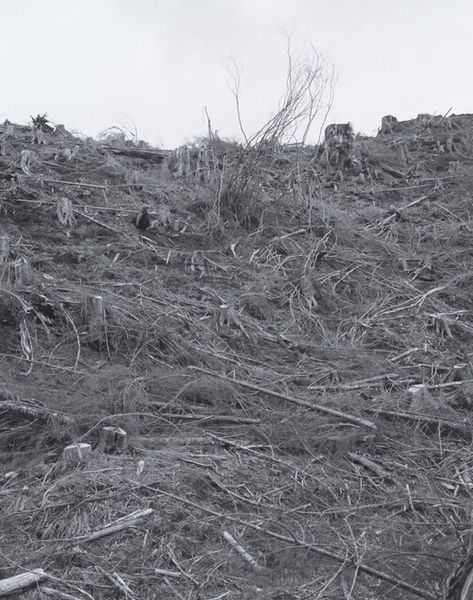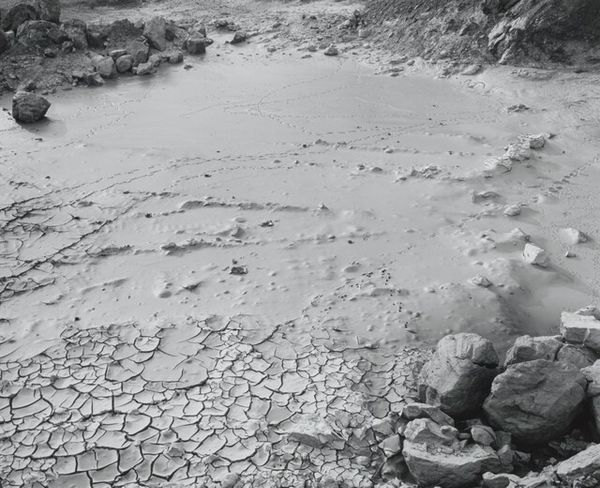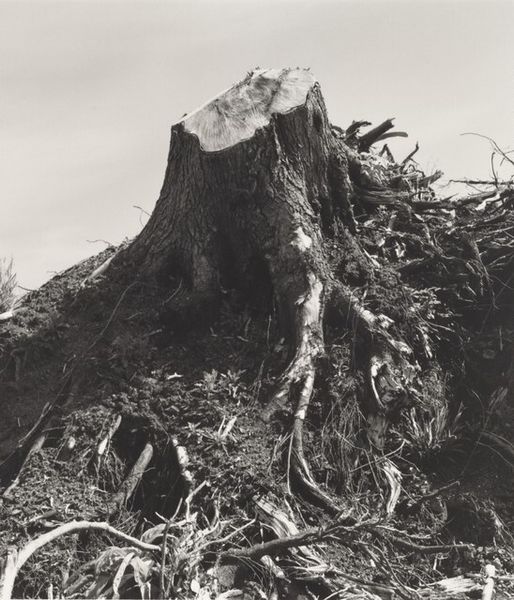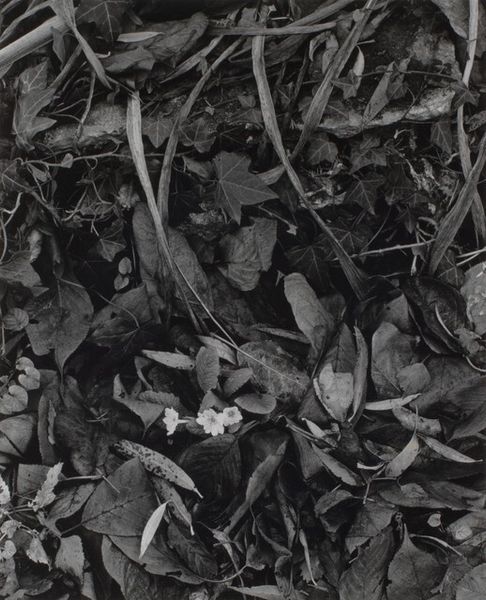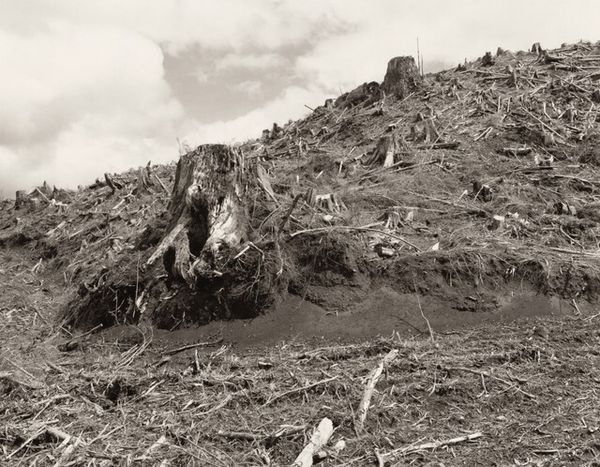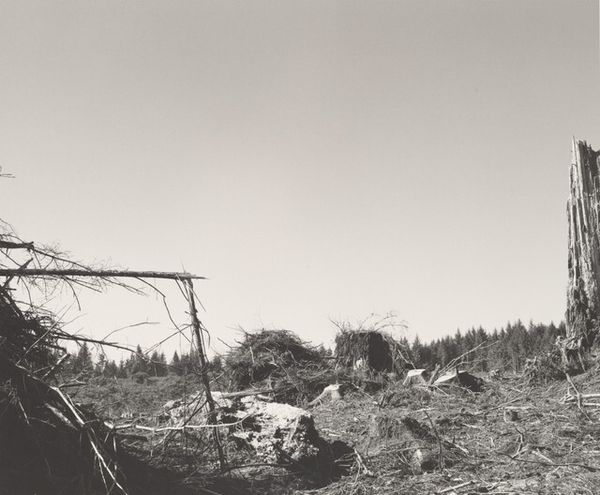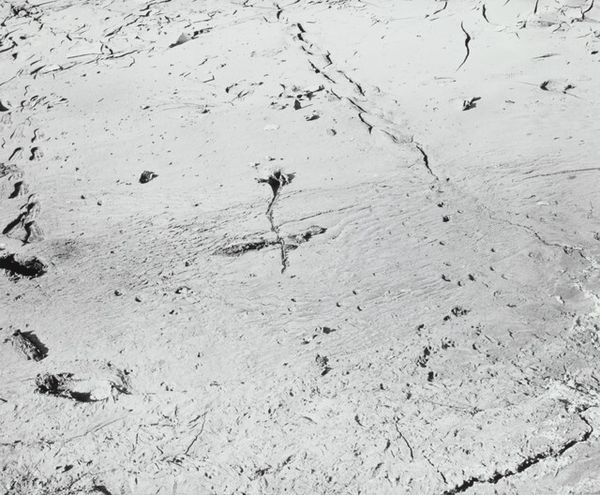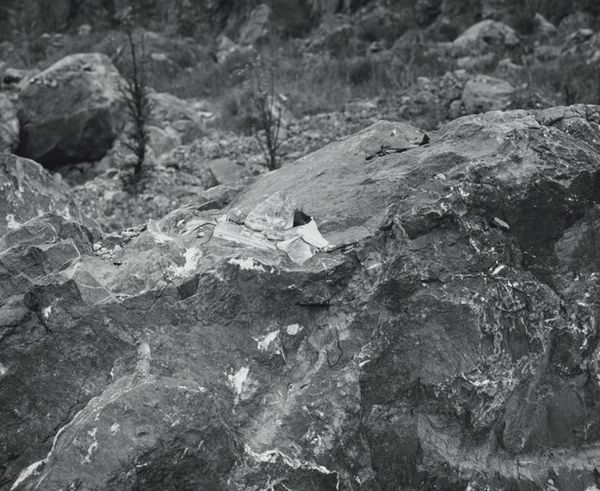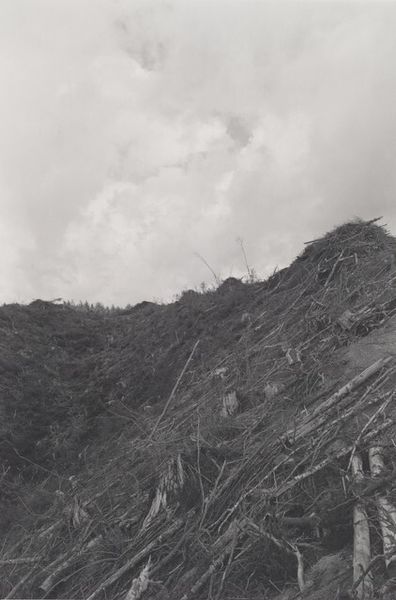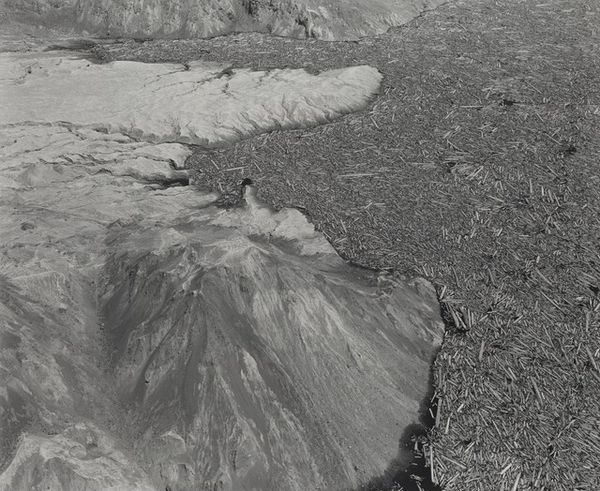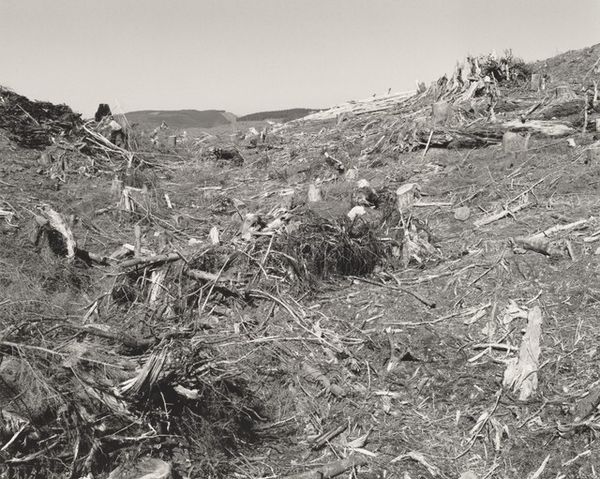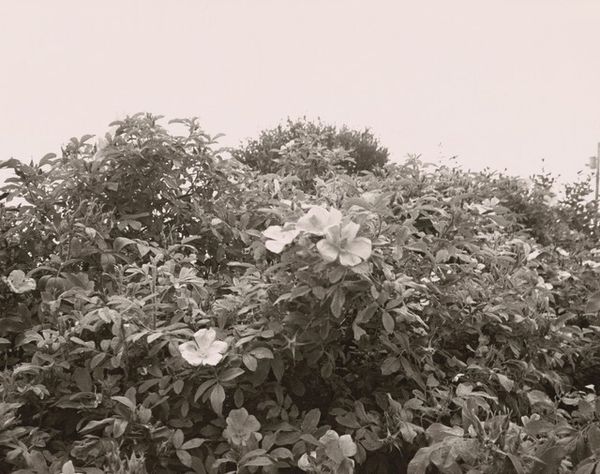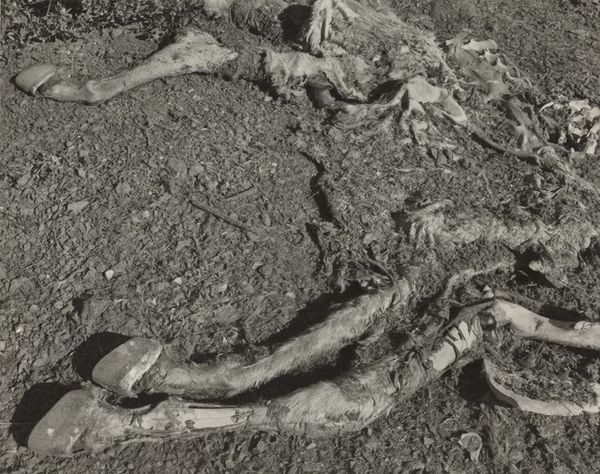
photography, gelatin-silver-print
#
photorealism
#
conceptual-art
#
black and white photography
#
postmodernism
#
landscape
#
photography
#
black and white
#
gelatin-silver-print
#
monochrome photography
#
monochrome
#
monochrome
Dimensions: image: 18.8 × 22.9 cm (7 3/8 × 9 in.) sheet: 20.32 × 25.4 cm (8 × 10 in.)
Copyright: National Gallery of Art: CC0 1.0
Editor: Here we have Lewis Baltz's "San Quentin Point, no. 42," a gelatin-silver print made sometime between 1982 and 1985. It’s a black and white photograph that depicts what looks like a collection of discarded metal shavings and other debris. I’m struck by the texture and how industrial and desolate it feels. What do you see in this piece? Curator: This work highlights the materiality of so-called progress. Consider the title: San Quentin Point. Baltz invites us to consider what's just outside the prison walls. The "waste" here isn't just debris; it's the discarded byproducts of a system. This gelatin-silver print—what labor went into creating it, from the mining of silver to the darkroom work? He forces us to acknowledge the processes behind the final image and, by extension, the processes that shape our environment and society. Editor: So you're saying Baltz is interested in the act of making and its consequences? Curator: Exactly. Baltz challenges the traditional notion of pristine landscape photography by showing us what we often overlook: the industrial residue, the scraps, the uncomfortable truths about production and consumption. It disrupts our perception of landscape. Is it even a landscape anymore, or is it a manufacturing site that becomes a dumping ground? Editor: It’s interesting how the choice of black and white flattens the image, focusing our attention on the forms and textures. The scale seems indeterminate too – is this a close up of something small, or a wider view? Curator: That ambiguity is intentional. He removes any sense of romanticism, any visual hierarchy. By using black and white, he strips away the distraction of color, compelling us to focus on the materials themselves and the marks of labor embedded within them. The photographic process becomes part of the subject itself. Editor: That's really insightful. I never thought about photography itself being a process rooted in material and labor. It really gives a new perspective to appreciating art. Curator: Precisely. By analyzing the material aspects of the artwork, from its subject matter to its means of production, we gain a much deeper understanding of its meaning and its connection to the world around us.
Comments
No comments
Be the first to comment and join the conversation on the ultimate creative platform.
